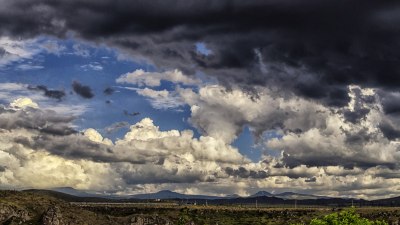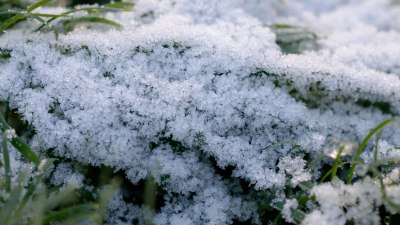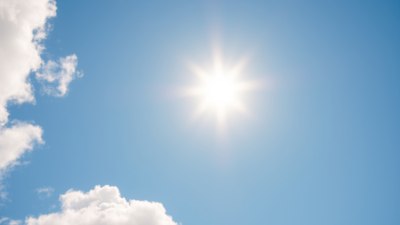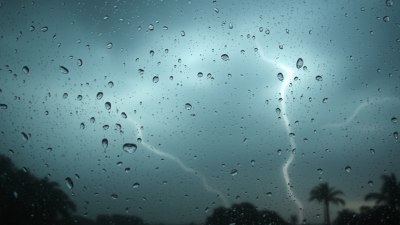Why Some Clouds Cast Rain Shadows
Explore the phenomenon of rain shadows and learn why some clouds fail to produce rain.

The phenomenon of rain shadows is a fascinating aspect of meteorology that showcases how geographic features influence weather patterns. Rain shadows occur when moisture-laden air encounters a mountain range or other elevated terrain. As the air rises over the mountains, it cools and loses its moisture, resulting in precipitation on the windward side. However, by the time the air descends on the leeward side, it has lost much of its moisture, creating a dry area known as a rain shadow.
Understanding the Mechanism of Rain Shadows
To fully understand why some clouds cast rain shadows, we need to examine the process of orographic lift. When humid air travels toward a mountain, it is forced upwards. As the elevation increases, the air pressure decreases and the temperature of the air also drops. This phase change results in condensation, forming clouds and ultimately leading to precipitation on the mountain's windward side. The amount of rainfall can be substantial, especially in regions with prevalent moisture.
The Role of Topography
Topography is a significant player in the formation of rain shadows. Different geographical features, such as mountains, hills, and valleys, can either enhance or inhibit rainfall depending on their orientation and height. Typically, areas positioned on the windward side of large mountain ranges receive ample rainfall, as these regions are directly exposed to prevailing winds that carry moisture. Conversely, the leeward side experiences a dramatic reduction in precipitation.
Example of Rain Shadow Effect
A classic example of a rain shadow is found in the Cascade Range of the Pacific Northwest in the United States. The western slopes of the Cascades receive heavy rainfall due to moist air coming off the Pacific Ocean. However, once this air crosses over the mountain peaks and descends into the eastern valleys, the amount of rainfall diminishes significantly. As a result, areas like Eastern Washington are characterized by dry conditions and arid landscapes.
Climate Zones and Rain Shadows
Rain shadows can lead to the development of distinct climate zones. Regions in rain shadows may fall into arid or semi-arid categories, while adjacent areas on the windward side may have lush forests and abundant precipitation. This contrast can create stark differences in ecosystems, vegetation, and agriculture practices. For instance, the stark difference between the lush coastlines of the Pacific Northwest and the dry plains of Eastern Washington reflects the impact of the rain shadow effect.
Seasonal Variations
Seasonal changes also influence the dynamics of rain shadows. During winter months, when oceanic storms are more frequent, the rain shadow effect is often pronounced. As warm, moist air collides with cold air masses, intensified precipitation can occur on the windward side. During summer, the overall weather pattern shifts, leading to reduced precipitation levels, not just in rain shadow areas but across the entire region.
Influence of Global Wind Patterns
Global wind patterns play a crucial role in determining the characteristics of rain shadows. Trade winds, westerlies, and jet streams help dictate where moisture-laden air masses travel. Understanding these patterns can aid in predicting how and when rain shadows will manifest. Additionally, climate change is altering these patterns, potentially impacting future precipitation levels and rain shadow dynamics.
Implications of Rain Shadows
The implications of rain shadows extend beyond mere precipitation patterns. They can significantly impact agriculture, water supply, and local economies. Regions in rain shadows may require irrigation to support crops, while adjacent wet regions can thrive with natural rainfall. This disparity can lead to conflicts over water resources and necessitate careful water management strategies to ensure sustainability.
In summary, rain shadows result from the interaction between topography and atmospheric dynamics. By understanding the mechanisms behind this phenomenon, we can appreciate the complexity of weather patterns and their profound impact on the environment and human activities. Knowing why certain clouds cast rain shadows enhances our awareness of climatic variations and the vital role they play in ecosystem diversity and resource management.











